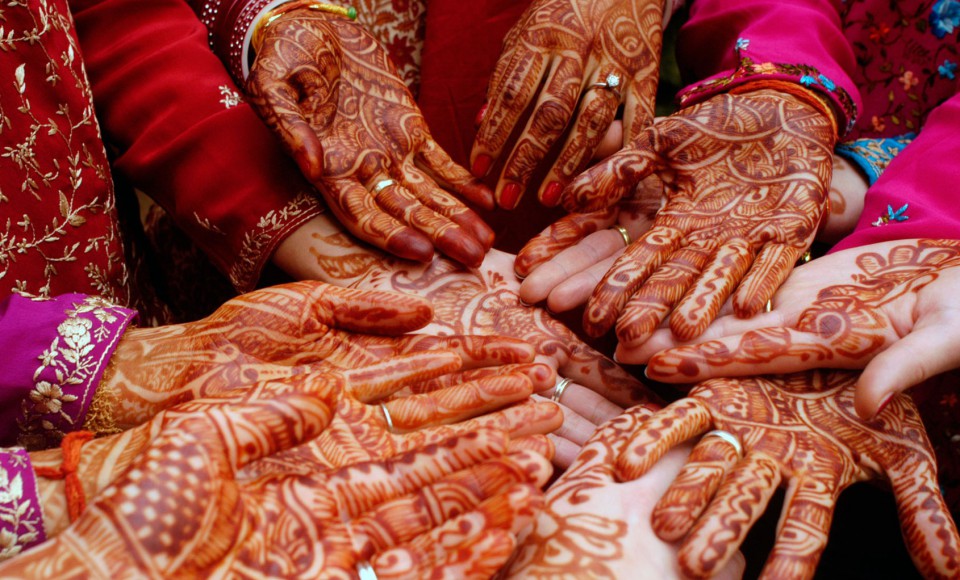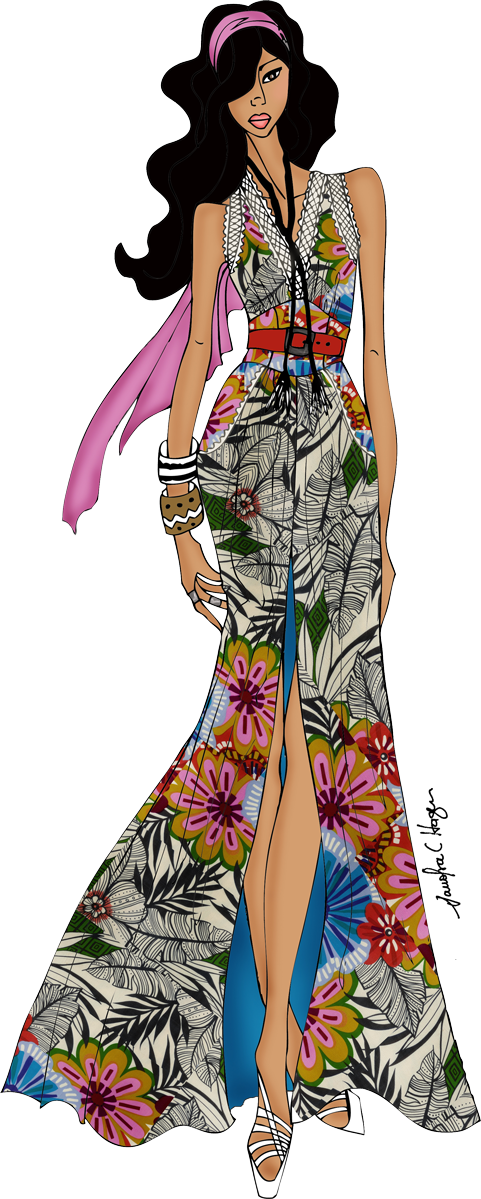Mehndi
A Timeless Tradition of Beauty

Hatho main, in hatho main, likh ke mehndi se sajana ka naam… (“Written in the mehndi adorning my hands is the name of my beloved”).
This lovely Hindi melody, sung by Anuradha Paudwal, was playing in a restaurant recently and brought to mind all the emotions associated with this cherished ceremonial ritual for the women of so many regions.
While its popularization in the West has risen over the last 20 years or so, the art of applying mehndi, has existed for more than 5,000 years. Historical evidence ties its origin and dissemination to various peoples from the Egyptians to the Mughals to the Indians. Known for its cooling and healing properties, the henna plant, from which mehndi paste is made, grows mainly in hot climates throughout Africa, Asia and the Middle East.
Most often connected with marriage ceremonies, many South Asian brides have mehndi or henna applied to their hands and feet in a lively ceremony of dancing and singing with their female relatives and friends. The color of the mehndi stain signifies various cultural meanings: the deeper the mehndi stain, the deeper the affection the bride will receive from her new family; as long as the mehndi color remains, the new bride will refrain from doing housework; and a favorite, the wedding night may not commence until the groom has found his name hidden in his bride’s mehndi.
Henna, also associated with myriad other life celebrations such as pregnancy and seasonal festivals, embodies the positive power of the female spirit. “Henna has historically been done by women for women,” says Darla Nunnery, owner of the Starlight Mehndi Studios which serves Tampa, St. Petersburg and Sarasota. “It is symbolically applied for good luck, courage and happiness, and I find the inherent nature of this application to be attractive to the wearer.”
Nunnery, who has been creating unique henna designs for her diverse clientele for well over a decade, notes that henna is not connected to the Western tattoo. “Henna isn’t like going into a tattoo shop and picking out some flash and then you get exactly that. My clients are familiar with the East Indian and Persian style of my work and allow me artistic reign,” she says. “Attuning myself to the energies of the client, and creating a design that is special just for them is part of my personal henna process.”
She offers a few notes on her personal technique: “I use natural henna, mixed with citrus juice, sugar, and a blend of eucalyptus and tea tree essential oils. A proper henna artist should always be able to tell you what is in their henna paste; beware of those who cannot! Stay away from black henna as it is highly toxic.”
The universal appeal of the art form is what has kept the tradition alive. Says Nunnery: “Hands and feet take the natural red-brown henna stain the darkest and these areas are where the henna will last the longest. This is because the skin on the hands and feet is thicker, and there are more layers of the actual dermis for the henna molecules to penetrate into. Every range of skin color can appreciate henna; no one is too dark or too light!”
To this day, the women of my family, regardless of age, take great pleasure in having their hands decorated with henna. The sheer beauty and shared experience resonate deeply, and remind us of happy times filled with love, family and spirited celebrations.
It [henna] is symbolically applied for good luck, courage and happiness, and I find the inherent nature of this application to be attractive to the wearer.
Darla Nunnery
 Get VERTICAL…and be part of something Fabulous!!!
Get VERTICAL…and be part of something Fabulous!!!